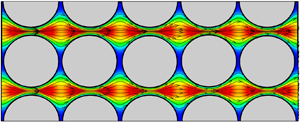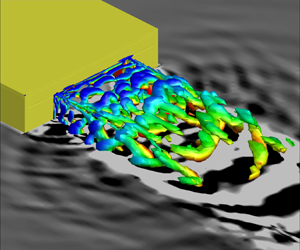Refine listing
Actions for selected content:
1418085 results in Open Access
Turning Students into Stock Market Investors: The Role of Civil Society and Public Schools in Swedish Financialization, c. 1985–2010
-
- Journal:
- Enterprise & Society / Volume 25 / Issue 4 / December 2024
- Published online by Cambridge University Press:
- 12 January 2024, pp. 1264-1294
- Print publication:
- December 2024
-
- Article
-
- You have access
- Open access
- HTML
- Export citation
Carl Abbott, Suburbs. A Very Short Introduction. Oxford: Oxford University Press, 2023. 140pp. 10 b/w images. Ppk £8.99.
-
- Journal:
- Urban History / Volume 50 / Issue 4 / November 2023
- Published online by Cambridge University Press:
- 12 January 2024, pp. 845-847
-
- Article
- Export citation
Methodological Impasses: Facing Interrogation and Silence While Gathering Data on Sexual Violence in India
-
- Journal:
- PS: Political Science & Politics / Volume 57 / Issue 2 / April 2024
- Published online by Cambridge University Press:
- 12 January 2024, pp. 306-309
- Print publication:
- April 2024
-
- Article
-
- You have access
- Open access
- HTML
- Export citation
Unruly Speech: Displacement and the Politics of Transgression Saskia Witteborn. Stanford, CA: Stanford University Press, 2023. 250 pp. $28.00 (pbk). ISBN 9781503634305
-
- Journal:
- The China Quarterly / Volume 257 / March 2024
- Published online by Cambridge University Press:
- 12 January 2024, pp. 273-274
- Print publication:
- March 2024
-
- Article
- Export citation
Michael E. Smith, Urban Life in the Distant Past: The Prehistory of Energized Crowding. Cambridge: Cambridge University Press, 2023. Xviii + 350pp. 83 figures. 17 tables. £100.00 hbk.
-
- Journal:
- Urban History / Volume 50 / Issue 4 / November 2023
- Published online by Cambridge University Press:
- 12 January 2024, pp. 840-842
-
- Article
- Export citation
Gastrointestinal helminths of the Australasian harrier (Circus approximans Peale, 1848) in New Zealand, and description of a new species of nematode, Procyrnea fraseri n. sp. (Habronematidae)
-
- Journal:
- Journal of Helminthology / Volume 98 / 2024
- Published online by Cambridge University Press:
- 12 January 2024, e6
-
- Article
-
- You have access
- Open access
- HTML
- Export citation
Perceived and Received Support by Academic Medicine Faculty During the COVID-19 Pandemic: A Single Institution Study
-
- Journal:
- Disaster Medicine and Public Health Preparedness / Volume 18 / 2024
- Published online by Cambridge University Press:
- 12 January 2024, e3
-
- Article
- Export citation
An Awkward Predicament: “The German Man” and Feminized Modernity in the 1840s
-
- Journal:
- Central European History / Volume 57 / Issue 1 / March 2024
- Published online by Cambridge University Press:
- 12 January 2024, pp. 1-24
- Print publication:
- March 2024
-
- Article
-
- You have access
- Open access
- HTML
- Export citation
CASSIUS DIO'S CONTEMPORARY NARRATIVE - (A.G.) Scott An Age of Iron and Rust. Cassius Dio and the History of His Time. (Historiography of Rome and Its Empire 18.) Pp. x + 258. Leiden and Boston: Brill, 2023. Cased, €109. ISBN: 978-90-04-54111-5.
-
- Journal:
- The Classical Review / Volume 74 / Issue 1 / April 2024
- Published online by Cambridge University Press:
- 12 January 2024, pp. 89-91
- Print publication:
- April 2024
-
- Article
- Export citation
Order–disorder transitions within deformable particle suspensions in planar Poiseuille flow
-
- Journal:
- Journal of Fluid Mechanics / Volume 979 / 25 January 2024
- Published online by Cambridge University Press:
- 12 January 2024, A29
-
- Article
- Export citation
List of books reviewed
-
- Journal:
- Urban History / Volume 50 / Issue 4 / November 2023
- Published online by Cambridge University Press:
- 12 January 2024, p. 617
-
- Article
- Export citation
UHY volume 50 issue 4 Cover and Back matter
-
- Journal:
- Urban History / Volume 50 / Issue 4 / November 2023
- Published online by Cambridge University Press:
- 12 January 2024, pp. b1-b3
-
- Article
-
- You have access
- Export citation
Empires, Languages, and Scripts in the Perso-Indian World
-
- Journal:
- Comparative Studies in Society and History / Volume 66 / Issue 2 / April 2024
- Published online by Cambridge University Press:
- 11 January 2024, pp. 443-469
-
- Article
-
- You have access
- Open access
- HTML
- Export citation
Pore-scale modelling of particle transport in a porous bed
-
- Journal:
- Journal of Fluid Mechanics / Volume 979 / 25 January 2024
- Published online by Cambridge University Press:
- 11 January 2024, A9
-
- Article
- Export citation
Fixed-flux Rayleigh–Bénard convection in doubly periodic domains: generation of large-scale shear
-
- Journal:
- Journal of Fluid Mechanics / Volume 979 / 25 January 2024
- Published online by Cambridge University Press:
- 11 January 2024, A19
-
- Article
- Export citation
Noise mitigation in rectangular jets through plasma actuator-based shear layer control
-
- Journal:
- Journal of Fluid Mechanics / Volume 979 / 25 January 2024
- Published online by Cambridge University Press:
- 11 January 2024, A16
-
- Article
-
- You have access
- Open access
- HTML
- Export citation
The Struggle for the People’s King: How Politics Transforms the Memory of the Civil Rights Movement. By Hajar Yazdiha. Princeton, NJ: Princeton University Press, 2023. 286p. $95.00 cloth, $29.95 paper. - After Black Lives Matter: Policing and Anti-Capitalist Struggle. By Cedric Johnson. New York: Verso Books, 2023. 416p. $34.95 cloth.
-
- Journal:
- Perspectives on Politics / Volume 22 / Issue 3 / September 2024
- Published online by Cambridge University Press:
- 11 January 2024, pp. 881-883
- Print publication:
- September 2024
-
- Article
- Export citation
Bragg scattering of nonlinear surface waves by sinusoidal sandbars
-
- Journal:
- Journal of Fluid Mechanics / Volume 979 / 25 January 2024
- Published online by Cambridge University Press:
- 11 January 2024, A13
-
- Article
- Export citation
Divisive or Descriptive?: How Americans Understand Critical Race Theory
-
- Journal:
- Journal of Race, Ethnicity and Politics / Volume 9 / Issue 1 / March 2024
- Published online by Cambridge University Press:
- 11 January 2024, pp. 157-181
-
- Article
-
- You have access
- Open access
- HTML
- Export citation
Perspectives of the Court of the Astana International Financial Centre: Potential to Transform the Central Asian Legal Landscape
-
- Journal:
- Asian Journal of Comparative Law / Volume 19 / Issue 1 / April 2024
- Published online by Cambridge University Press:
- 11 January 2024, pp. 160-179
-
- Article
- Export citation


















